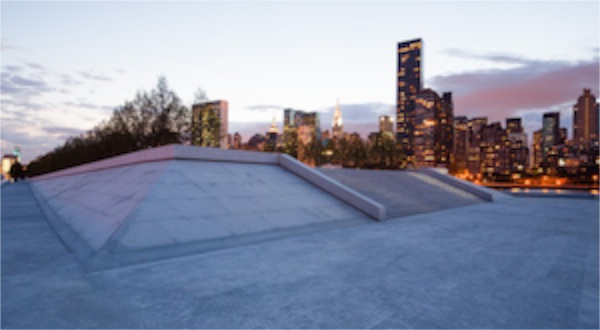On a pile of garbage
13/09/12 05:02

Our generation in this part of the world is producing record amounts of garbage. We tend to go through things at a pretty rapid pace. Technologies such as cell phones and computers are considered to be obsolete after only a couple of years of use. Our neighborhood has large bins for each house that are emptied weekly into large trash compactor trucks. On garbage day, I am always surprised to see how many homes there are with extra garbage set out in other containers, or the primary container filled to overflowing. We often put out a container that is less than half full. And it seems to me that our household produces a lot of garbage.
What to do with all of that garbage is a significant problem for many communities. When settlers began to move into the prairies, they selected a coulee near their homes or some other place to deposit the items they no longer wanted or needed. As communities formed and people gathered together in urban areas, they developed a variety of different ways of dealing with their garbage. In coastal areas, significant amounts of garbage were just dumped into the ocean. In our area, landfills were developed to bury the garbage. These areas consume significant amounts of territory and require heavy equipment to keep the garbage buried.
After many years of burying the garbage, we move on to new locations. Sometimes the old landfills gain new uses. There are more than a few communities across the Midwest with parks or golf courses over the places where we once buried our garbage. In Brookings, a 135-acre property that once contained a series of gravel pits and the city landfill has now become the Dakota Nature Center. The landfill has been capped, ponds have stocked with fish and a master plan has been adopted to guide future development.
 But this is South Dakota. We seem to enjoy the outdoors best when we are inside a building. Both Sioux Falls and Rapid City have “Outdoor Learning Centers” that have striking buildings as their main feature. In that context, it shouldn’t surprise us that construction has begun on a $1.16 million nature center for the Dakota Nature Park in Bookings. What better way to enjoy the great outdoors than from within a 5,300 square foot building?
But this is South Dakota. We seem to enjoy the outdoors best when we are inside a building. Both Sioux Falls and Rapid City have “Outdoor Learning Centers” that have striking buildings as their main feature. In that context, it shouldn’t surprise us that construction has begun on a $1.16 million nature center for the Dakota Nature Park in Bookings. What better way to enjoy the great outdoors than from within a 5,300 square foot building?OK, I know I’m not being fair. The buildings provide space for classrooms and offices and they also provide access to nature for those with physical handicaps that prevent them from doing extensive hiking or biking. Still, it does seem a bit silly that every time we make plans for some kind of nature center, we begin by envisioning the buildings that will be built.
And when the buildings have been used, we tear them down to make more garbage to bury in landfills.
It has been nearly 40 years since famed architect Louis Kahn proposed developing the Four Freedoms Park on Roosevelt Island as a memorial to Franklin Delano Roosevelt. The site was once a landfill, receiving mountains of garbage from the massive city. It does, however, avoid dramatic views of the city along one of its more picturesque waterfronts. Back in the seventies, when the city was struggling to find new solutions to the growing mountains of garbage, Kahn envisioned a carefully designed outdoor space, rather austere by New York standards, where people could go for retreat from the city and meditation. The proposal was a memorial, simple and understated with outdoor space where visitors could look out over the city and the waters of the East River in the direction of the Statue of Liberty, the ocean and Europe.

The memorial is now becoming a reality. It opens October 24. More than $53 million was raised from private sources to fund the project. It is expected that the site will become a state park administered by a conservancy. Preserving the site will be a challenge. Policing graffiti artists and skateboarders will have to be weighed against the park’s freedom theme. The remains of a 19th-century smallpox hospital will serve as an entryway to the park.
Much of the remainder of the island is slated to become a part of a New York campus for Cornell University. Plans are not complete, but some preliminary drawings depict a suburban-style office park. They seem out of place next to the stunning architecture of Four Freedoms Park. I know nothing about the ins and outs and politics of urban planning, but I suspect that there are many impassioned arguments ahead before the plans for the University are approved.
I don’t know what kinds of buildings will be built but I am as intrigued about a college on a garbage heap as I am a place to contemplate freedoms. During the Second World War, President Roosevelt gave a speech that was a call to safeguard the freedoms of speech and worship and the freedoms from want and fear. Now, decades later, there will be a park for people to visit to recall and rededicate themselves to those freedoms. One day there will also be a university campus on the same island.
Maybe we are capable of learning something when we sit on top of a pile of our own garbage. I have high hopes that we might.